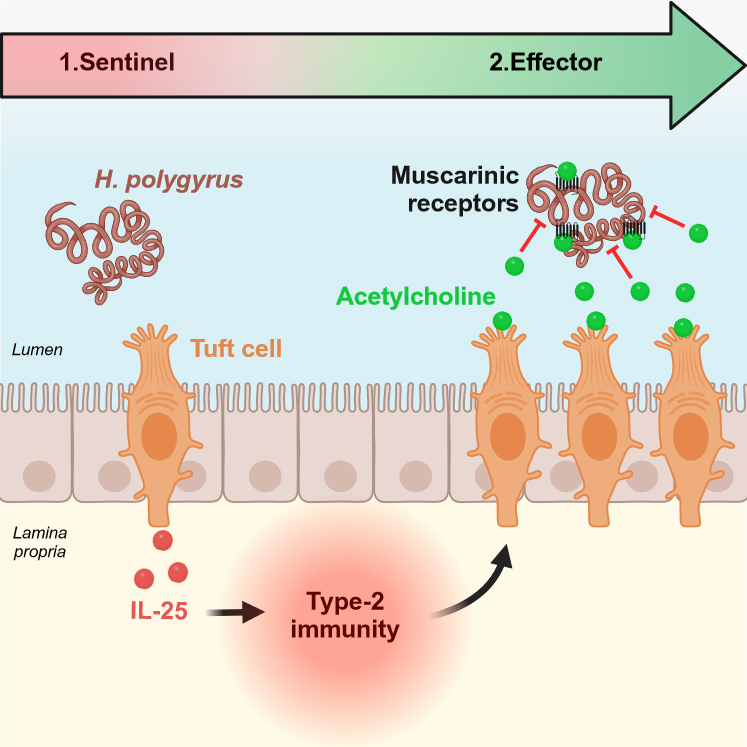TUFT CELLS ARE EPITHELIAL EFFECTORS OF TYPE 2 IMMUNE RESPONSES
This study, performed by the team “Self-renewal and differentiation of epithelia” headed by Philippe Jay, in collaboration with the groups of Rick Maizels (UK), Valérie Zimmermann (IGMM) and Andreï Turtoi (MAMMA facility), describes a novel function of intestinal tuft cells in mucosal immune defence. The digestive tract represents the largest contact surface between a host and its outside environment. Innate immune responses are the first line of defence of our organism against potential pathogens. In the case of helminth parasite infections, the host initiates a distinct response called type 2 immune response, involving specific hematopoietic cells and causing a remodelling of the intestinal mucosa, aimed at facilitating worm expulsion. We identified previously the critical function of intestinal tuft cells in initiating such an immune response, acting like a sentinel cell. Beyond this surveillance role, we now demonstrate that tuft cells are also effector cells of the anti-parasite immune response.
While the role of the drastic tuft cell number amplification that occurs during type 2 immune responses has long remained mysterious, our data reveal the property of these cells to synthetize acetylcholine and to release it in the intestinal lumen. This leads to a massive elevation of acetylcholine concentration in the gut lumen, contributing to parasite expulsion. Consequently, mice with acetylcholine biosynthesis-deficient tuft cells cannot expulse parasites efficiently. Finally, our results demonstrate that acetylcholine directly impacts worm physiology, decreasing their fecundity, through their muscarinic acetylcholine receptors.
Thus, after having identified the first function of intestinal tuft cells as sentinels, our team demonstrates their critical role of effector cells, promoted by their capacity to produce molecules that directly target parasites, such as acetylcholine.
This work was accepted for publication in Immunity.

Upon parasitic infection, intestinal tuft cells release the Il25 alarmin, leading to a type 2 immune response and subsequent increase of tuft cell numbers. These newly produced tuft cells secrete acetylcholine in the gut lumen to target the parasites, acting on their muscarinic acetylcholine receptors.


